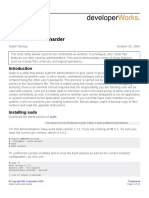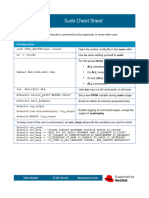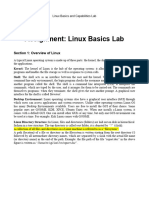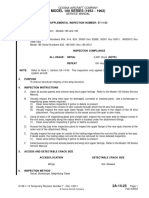0% found this document useful (0 votes)
147 views10 pagesAdd User to sudoers in Linux
This document discusses how to add users to the sudoers file in Linux to grant them administrative privileges. It explains that the sudoers file lists users who can use sudo commands and must be edited with visudo. It then provides steps to add a user to the sudo group to grant full access or edit the file to limit a user to specific commands like apt. Managing sudo access safely allows sharing administrative tasks while reducing risks of mistakes.
Uploaded by
CesarCopyright
© © All Rights Reserved
We take content rights seriously. If you suspect this is your content, claim it here.
Available Formats
Download as PDF, TXT or read online on Scribd
0% found this document useful (0 votes)
147 views10 pagesAdd User to sudoers in Linux
This document discusses how to add users to the sudoers file in Linux to grant them administrative privileges. It explains that the sudoers file lists users who can use sudo commands and must be edited with visudo. It then provides steps to add a user to the sudo group to grant full access or edit the file to limit a user to specific commands like apt. Managing sudo access safely allows sharing administrative tasks while reducing risks of mistakes.
Uploaded by
CesarCopyright
© © All Rights Reserved
We take content rights seriously. If you suspect this is your content, claim it here.
Available Formats
Download as PDF, TXT or read online on Scribd
/ 10
























































































